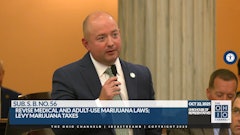
California’s legal cannabis market is on track to grow 23 percent in 2019 to $3.1 billion, but consumer spending is still slower than expected due to the current regulatory and tax climate in the state, according to research from Arcview Group and BDS Analytics.
Some of the key factors driving growth include the addition of more customers moving from illicit sales to the legal market and a rise in adult-use sales from tourists, says David Abernathy, vice president of data and government affairs at Arcview. Wider availability of different forms of consumption is also driving growth, Abernathy says.
Arcview forecasts consumer spending to reach $7.2 billion in 2024, a 19-percent compound annual growth rate over the next five years.
Even so, the illicit market will still account for 53 percent of the state’s cannabis sales by 2024, according to the report. Cannabis from the illicit market can be as much as 77 percent less expensive than legal products in California, Abernathy says. He pointed to challenges in obtaining licenses from the state and burdensome taxes as reasons for slow growth.
“California has quite a few taxes starting with $9.25 per ounce cultivation tax, which gets compounded at every stop along supply chain,” Abernathy says.
In 2018, California became the first state to see year-over-year cannabis sales fall after legalizing adult use, according to the Arcview news release.
“States making the move before–including Colorado, Washington and Oregon–have typically seen consumer spending double over 12 months,” Arcview noted in the release. “But in California, local bans on commercial cannabis activity caused the number of retailers to shrink sharply during the launch of the state’s adult-use program in January 2018. Stringent testing regulations that took effect in July 2018 prompted many suppliers to fold as product shortages cut consumer spending dramatically.”
Abernathy says he expects California to continue working on regulations and taxes to make the legal market more competitive. Other states considering medical or adult-use programs can learn several lessons from California, Abernathy says.
“The biggest lesson is if you want legal market to displace illicit market you have to have a level of taxes that is reasonable,” he says. “If taxes are too high, you’ll see a huge percentage of the market that is illicit. The other thing is ensuring regulations are reasonable enough that businesses can easily comply with them.”


























